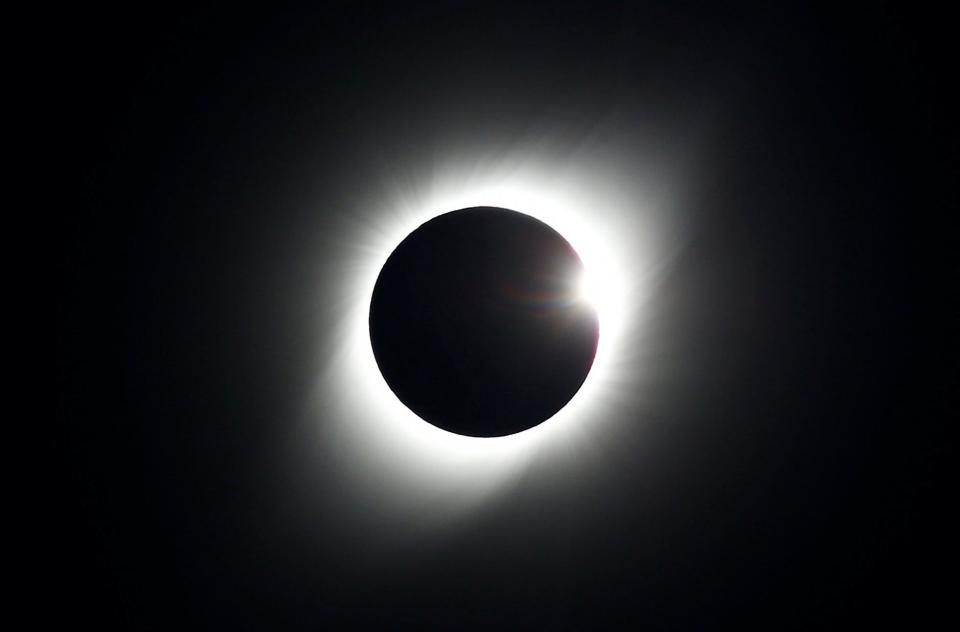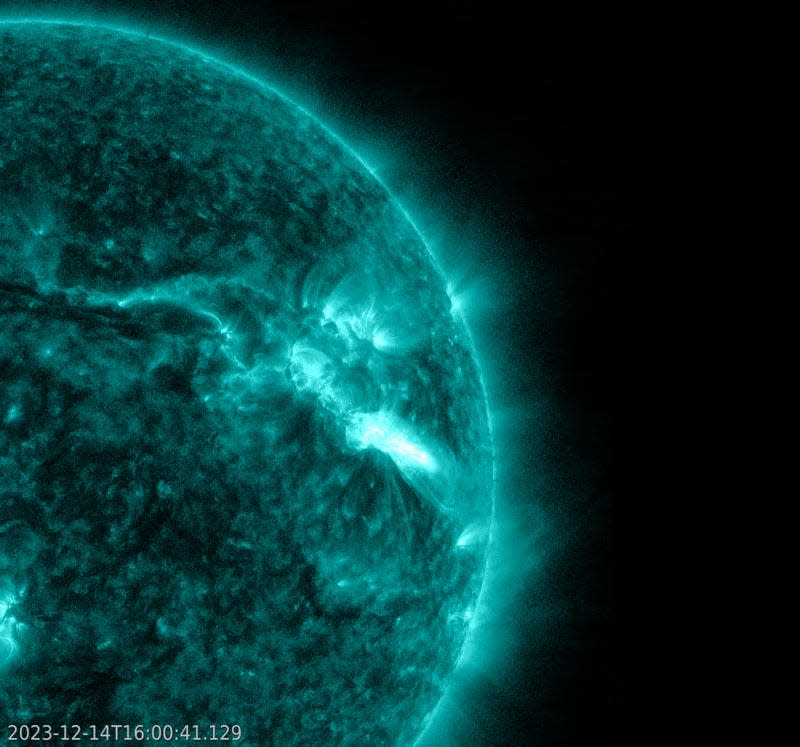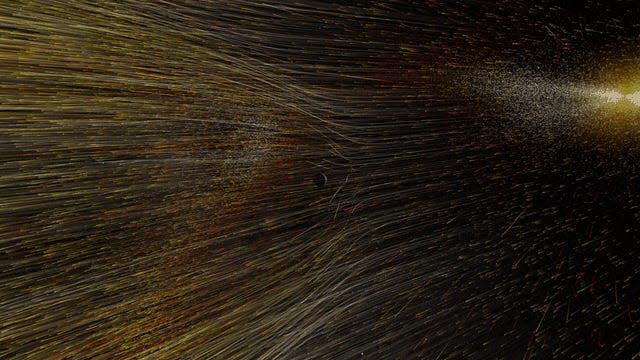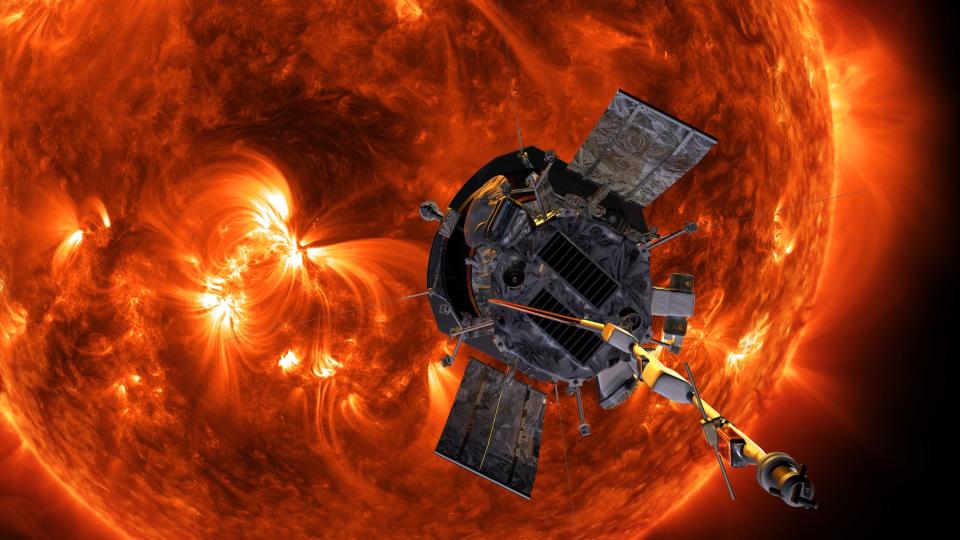-
The Sun has a big year ahead in 2024, starting with a total solar eclipse across the United States.
-
Watch out for the northern lights as the sun reaches maximum activity.
-
NASA’s Parker Solar Probe will fly closer to the sun than any spacecraft ever and nearly land on the sun.
The Sun has been showing off dramatic explosions, sunspots, giant “holes” and even a 14-earth-high plasma tornado over the past year. But 2024 could be our star’s biggest year yet.
That’s what giddy NASA scientists told reporters at the fall meeting of the American Geophysical Union in San Francisco in December. In true NASA style, they’re calling it the “big year of heliophysics.”
One of the main events this year will be the historically spectacular total solar eclipse that will pass over the US in April. It is estimated that as many as 7.4 million people will travel to the path of totality to witness this rare event.
Another exciting event involves NASA’s main solar probe, which will skim the sun’s surface in December and fly closer than any previous spacecraft.


Meanwhile, it is certain that the Northern and Southern Lights will have an impressive year.
Last year we already saw the beautiful aurora borealis reach as far south as Arizona. And as the stormy activity on the sun that helps spark aurora borealis around the world prepares to increase, we may continue to see the Northern Lights light up the skies at unusually low latitudes across the United States.
For audiences in Australia, New Zealand and South America, the Southern Lights (aurora australis) will also make absolutely spectacular displays.


It will take about 11 years (a full solar cycle) for the Aurora to become this active again.
“The sun touches everything, and we invite you to experience the sun in as many ways as possible,” said Kelly Korreck, NASA’s upcoming eclipse program manager, speaking at the AGU roundtable. she said.
The Sun’s big year begins with a total eclipse


While the rest of us put on our eclipse glasses or gaze at the pink and green streaks of the aurora, astronomers will be busy with their work. This year’s solar events are a great scientific opportunity.
For example, NASA is launching three rockets loaded with instruments during April’s total solar eclipse to study how sudden darkness changes our upper atmosphere.
A total solar eclipse offers scientists a unique opportunity to observe the corona, the outer layer of the sun’s atmosphere. The corona is 100 times hotter than the surface of the sun, but scientists can’t explain why, and it’s one of the biggest mysteries in our solar system. During the eclipse, only the corona is visible because the Moon blocks the main disk of the Sun.
NASA’s Parker Solar Probe and the European Space Agency’s Solar Orbiter will also watch the eclipse from two different points in space while orbiting close to the sun. This extra data could help scientists take 3D observations of the corona and verify measurements at Earth-based observatories.
This is just a brief moment in the sun’s great year. As solar activity increases throughout 2024, countless observatories and physicists will be watching closely.
The sun will become increasingly active


When the Sun ejects plasma and charged particles into space, it can accelerate toward Earth, travel poleward along our planet’s magnetic field lines, and interact with molecules in our atmosphere to create aurora. They can also knock satellites out of orbit and use ground-based technologies to surge, triggering radio blackouts and interfering with GPS.
This “solar wind” always has a steady flow, but solar outbursts can send a powerful flood of solar wind hurtling toward our planet. This is what scientists call space weather. These storms are occurring more and more as the sun climbs towards its peak of activity.


People on Earth are safe from these bursts from solar activity, except in rare cases where they may cause power outages or radio blackouts. But as NASA and other space agencies send humans back to the moon and Mars, space weather will become a safety issue for them.
Studying solar flares and explosions could help scientists better predict space weather in the future. This could be crucial for long-distance spaceflight.
“If we want to win the race to Mars, then we need to be aware of space weather everywhere,” Nour Raouafi, chief scientist of the Parker Solar Probe, told the roundtable.
NASA will almost land on the Sun by the end of the year


The “crown jewel” of the solar big year arrives on December 24, Raouafi said. That’s when Parker Solar Probe will come closer to the sun than any spacecraft has ever gone before, about 3.8 million miles from its surface.
For comparison, Earth is 93 million miles from the sun.
On this close flyby, the probe will face extreme temperatures and radiation, reaching up to 2,600 degrees Fahrenheit.
Collecting data so close to the source of the solar wind will help scientists understand how the wind forms. This will also accelerate corona studies.
“This is a monumental achievement for all humanity. This is equivalent to the moon landing in ’69. Now we are almost landing on a star,” Raouafi said.
Read the original article on Business Insider